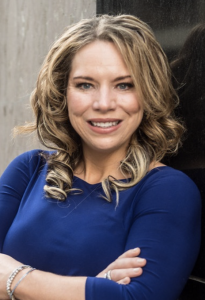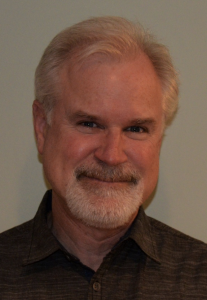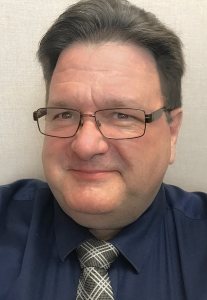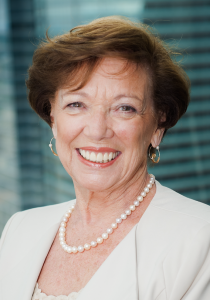
Introducing our editorial advisory board
April 3, 2020
By
OHS Canada
8 industry professionals will help shape content for next 2 years
OHS Canada is pleased to introduce a refreshed editorial advisory board, consisting of eight industry professionals from across Canada.
This group will provide perspective and input on the editorial direction of our magazine. They are not responsible for published content.
Our diverse team includes members from coast to coast and we are thankful for their involvement with our brand.

Paula Campkin
Vice-president and chief safety officer at Energy Safety Canada in Calgary, Alta.
Paula Campkin provides strategic leadership around development of standards and initiatives to drive improved safety performance in Canada’s oil and gas industry.
She is also the co-founder and inaugural chairperson of the Women in Occupational Health and Safety Society (WOHSS), an organization dedicated to building a better future for women within the safety profession. WOHSS supports female safety professionals through education, mentoring, resources and connection.
Paula completed a BA in psychology from the University of Calgary and also holds an MBA from the Haskayne School of Business in Calgary. In addition, she holds the following professional designations: Certified Human Resources Professional (CHRP), Canadian Registered Safety Professional (CRSP), Canadian Risk Management (CRM) and Institute of Corporate Directors Designation (ICD.D).
“People are an organization’s best asset. Not only is it good business to keep people physically and mentally safe, it is also the right thing to do.”

Marty Dol
President, founder and CEO at HASCO Health and Safety Canada in Toronto
With more than 12 years as a Certified Training and Development Professional (CTDP), Marty Dol has trained thousands of workers across a variety of industries.
As the demand for training increases, Marty has hired trainers to deliver his high-energy style of training. He has created hundreds of programs for clients and consultancies.
Marty holds a college certificate in occupational health and safety and a diploma in business marketing. As workplace health and safety norms change over time, he works to ensure employers stay ahead of the curve of compliance.
“Employers should never allow themselves to be lulled into a ‘false sense of compliance,’ especially for reasons including no Lost Time Injury statistics or the simple fact that the company has had zero enforcement visits by provincial safety officers. If the company’s health and safety management system is not growing and changing when your own internal responsibility system dictates that you should, then your business and teams are not evolving either.”

Cindy Moser
Director of communications at the Institute for Work and Health (IWH) in Toronto
As head of the communications department at IWH, Cindy Moser helps ensure research evidence and tools are known to stakeholders and the public through newsletters, website, media relations, social media, videos and events.
Cindy was previously an editor of numerous publications — including OHS Canada. She earned her BA (honours) in history at Trent University and has her Knowledge Translation Professional Certificate from the University of Toronto.
“I believe one of the critical ways to make progress in workplace health and safety is to build policies and practices that incorporate the best research available. That’s why impartial, evidence-based information needs to get into the hands of policy-makers, employers, workers, occupational health and safety professionals and others who can make a difference.”
Natalie Oree
Prevention consultant – production at SAFE Work Manitoba in Winnipeg
Natalie Oree is a prevention consultant in Manitoba, providing guidance in the manufacturing, agriculture, forestry and mining sectors.
She has previously held health and safety positions with the province and the aerospace and educational sectors. Her 15 years of experience includes consulting, committee support, inspections and investigations, safety culture development, and injury and illness prevention training.
Natalie has a Bachelor of Science degree in environmental chemistry, is a Canadian Registered Safety Professional (CRSP) and a member of the Canadian Society of Safety Engineering (CSSE).
“What I believe is the most important about occupational health and safety is the effective implementation of a safety and health program, where the whole organization is committed to protecting the safety and health of its employees and everyone understands and takes responsibility for their role in the program.”
David Powers
Director of health, safety and environment at Oxford Frozen Foods in Oxford, N.S.
David Powers received his CRSP designation in 2005, became a member of the Canadian Society of Safety Engineering in 2007 and earned a master’s degree in occupational safety and health in 2015.
David is the vice-chair for the Nova Scotia chapter of the CSSE as well as board president of Farm Safety Nova Scotia.
From 2013 to 2018, David had the privilege of serving on the Item Writing Committee for the Board of Canadian Registered Safety Professionals, acting as chair for his last two years.
“I believe the training and mentoring of our next generation of safety professionals to be of critical importance. We need to be able to pass the torch effectively to equip our young and newer safety professionals to be able to face the challenges of the future!”
Richard Quenneville
Senior director of corporate services at T. Harris Environmental Management in Toronto
Richard Quenneville, B.Sc. (Chem.), is a Certified Industrial Hygienist and a Registered Occupational Hygienist with over 30 years of experience in occupational hygiene and environment health and safety.
Before joining T. Harris Environmental Management, most of his work was in telecommunications, manufacturing and pharmaceutical industries in both union and non-union environments.
He is a recipient of the OHAO Hugh Nelson Award for excellence in occupational hygiene, president of the Canadian Registration Board of Occupational Hygienists and past-president for the Occupational Hygiene Association of Ontario.
“Occupational health and safety has to be an integral part of workplace design and not just an add-on to the business. Controlling occupational hazards is key to reducing occupational disease and injuries in the workplace and has to be planned by using certified professionals.”
Maureen Shaw
Lecturer and presenter living in Victoria
Maureen Shaw has spent more than 35 years providing leadership in the evolution of health and safety at provincial, national and international levels. She is a thought leader and lecturer.
She was designated the “Mother of Health and Safety” at her retirement as President/CEO of the Industrial Accident Prevention Association (IAPA) — now Workplace Safety and Prevention Services (WSPS) in Mississauga, Ont.
“As we look to the future, leadership from the C-suite will be the critical link to creating a culture of health and safety in our workplaces and our communities we live, work and play in.”

Dylan Short
Managing director at The Redlands Group in Oakville, Ont.
Dylan Short has more than 20 years of experience as a business owner, safety professional, board leader and international speaker. The Redlands Group provides client-focused solutions that meet companies’ health, safety and risk-assurance needs.
In 2016, he was awarded CSSE’s highest award — Safety Professional of the Year.
Dylan serves in a variety of volunteer roles, including with the Standards Council of Canada as a technical committee member with ISO 45001 Occupational Health and Safety Management Systems.
“The commitment to occupational health and safety is an organization’s promise to provide workplaces and work that does not injure or otherwise harm workers. The work of the OHS profession is to assist the organization in fulfilling this promise to workers.”



